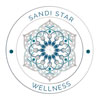24 Jan Herbs for the Immune System
Aloe Vera – Used internally it’s great for colon, stomach and GI track as well as other organs including lungs, liver and reproductive system. “Superstar” Used externally for skin.
Aloe Vera is used for consumption and relief of digestive issues such as heartburn and irritable bowel syndrome. It is common practice for cosmetic companies to add sap or other derivatives from Aloe Vera to products such as makeup, tissues, moisturizers, soaps, sunscreens, razors and shampoos which is what most people recognize it as and is most effective from the mature plant gel.
Taken internally it works wonders. The yellow under the skin (anthroquigens) is what makes it bitter but is extremely beneficial. It can stimulate the flow of bile and can help to heal a variety of digestive disorders such as IBS, ulcers, colitis and Crohn’s disease. Consuming Aloe Vera internally on a regular basis can keep the colon clean and in top working order. The bowels can work to their absolute best with the help of Aloe Vera.
Aloe Vera is very good for the lungs and can provide much needed relief to asthma sufferers. It also helps those suffering from bronchial congestion. Aloe Vera when taken internally can detoxify the body and can provide relief for hemorrhoid sufferers.
Other organs of the body can also benefit from the regular consumption of the healing herb, Aloe Vera. Aloe Vera can improve the work of the liver, the uterus and the rest of the reproductive system.
When buying aloe juice for internal consumption, buy whole leaf to get the benefits. Aloe helps absorption of other nutrients which makes it one of my favorites in dealing with IBS clients.
Dosage: Aloe Juice 1-2 TSP up to 3 times a day or one capful up to 3 times a day.
Bee Propolis – Used internally for digestive system, cardiovascular, immune, reproductive, respiratory, infectious disease. Used externally for skin.
Bee Propolis is a resinous mixture that honey bees collect from tree buds, sap flows, or other botanical sources. It is used as a sealant for unwanted open spaces in the hive. Propolis is used for small gaps (approximately 6 millimeters (0.2 in) or less), while larger spaces are usually filled with beeswax. Natural medicine practitioners use Propolis for the relief of various conditions, including inflammation, viral diseases, ulcers, superficial burns or scalds. Used for infections throughout the body such as urinary, yeast, herpes 1 cold sores. Propolis is also believed to promote heart health, strengthen the immune system and reduce the chances of cataracts. Old beekeepers recommend a piece of Propolis kept in the mouth as a remedy for a sore throat. Propolis lozenges and tinctures can be bought in many countries. Has an anti-tumor, anti-cancer effect. Kills cancer cells directly and helps prevent metastases. Helps control runaway cell breakdown, a condition symptomatic of cancer.
Contains Calcium, Magnesium, Iron, Copper, Zinc, Manganese, Cobalt and Silica Phenols, Waxes, Resins.
Dosage: Can be part of a mouthwash, lozenge. Comes in tinctures, gel caps, oral sprays and herbal salves.
Tincture – 1 1/2 dropper full diluted in room temperature water initially than 1 dropper full every 4 hours for a total of 4 (up to 5 maximum) doses per day.
Capsules 500 mg- take 3 caps 3x day or 4 caps 2x day.
Lozenge – chewable lozenge often combined with zinc (can take too much zinc long term) so be careful with lozenges. Also comes in throat spray which is fairly weak. Use 2-3 times what the label says.
For an acute problem take Bee Propolis 1-2 days beyond absence of symptoms. For a chronic problem, take Bee Propolis 1 week beyond absence of symptoms.
Caution: though claims have been made for its use in treating allergies, Propolis may cause severe allergic reactions if the user is sensitive to bees or bee products.
Echinacea – Used Internally as an anti-inflammatory and lymph cleanser
Echinacea is popularly believed to be an immunostimulator, stimulating the body’s non-specific immune system and warding off infections. Echinacea was one of the basic antimicrobial herbs of eclectic medicine (botanical remedies) from the mid 19th century through the early 20th century, and its use was documented for snakebite, anthrax, and for relief of pain. Antiviral; anti-bacterial. A “kick” to the immune system. Use before onset of symptoms or with early symptoms. T Cell stimulator- possible use with AIDS, Epstein-Barr. Increases production of B cells made in bone marrow. These cells attack pathogens. King of the blood and lymphatic cleansers. Anti-inflammatory for rheumatoid arthritis. For the skin, it stimulates regeneration of cellular connective tissue & epidermis. Another superstar for me for the stomach as it helps with bowel problems and ulcers not to mention the benefits for the lymphatic system. Most clients I see with IBS have an infection in the gut. Echinacea helps because it stimulated the T cells and helps clear yeast infections. Another common problem with IBS clients.
Dosage: Capsules somewhat effective but I recommend tincture form (40 drops 3-4 x day in hot water).
Caution: Not to be used long term. Not recommended with auto-immune disorders however I have not seen any issues from using Echinacea short term specifically hypothyroid. Might be cautious with Hashimoto’s or hyperthyroid.
Eleuthero used internally for adrenals, digestive system and cardiovascular system
Eleuthero is an “adaptogen,” an agent that helps the body address to stress. Scientists believe it helps prevent “adrenal burnout” caused by ongoing physical or mental challenges. Eleuthero boosts concentration and focus without the letdown than comes from drinking coffee or other sources of caffeine. Eleuthero also boosts immunity. Soviet scientists found taking both schisandra (which is also great for digestion) and eleuthero benefited endurance athletes by giving them an immune system boost. The two herbs together helped prevent colds, flu, and other infections after athletic events.
This herb is a powerful adaptogen that helps the liver detoxify toxins and helps normalize body functions. Brings body to homeostasis. Isn’t that what we all strive for? Great for normalizing blood sugar. Number one thyroid regulator. Stimulates the production of antibodies and increases white blood cell count. Helpful with autoimmune disorders which I run across a lot. Helps protect against radiation and chemotherapy by protecting against chemical toxins. Stimulates protein synthesis and cellular repair enzymes.
Very safe herb and can be taken ongoing providing you take for 3-4 months and take a month off. Rotate back in and continue regimen. For best results, increase the vitamin C foods in your diet when you take eleuthero.
Dosage: Tincture – 40 drops – full dropper, 3 times per day
Caution: May cause insomnia if taken too close to bedtime. Not recommended for persons with uncontrolled high blood pressure.
Licorice – Used internally for digestive system, endocrine system and benefits many other parts of the body. Another superstar.
(Legume Family)
This herb has been used by practitioners for thousands of years to treat ulcers, colds, skin disorders, and as a tonic for the heart and spleen.
It is also used to treat asthma, lupus, vertigo, Lyme disease, cancer, celiac disease, Crohn’s disease, gastritis and peptic ulcer. Primary herb for hypoglycemia.
The root of this herb contains a saponin glycoside called glycyrrhizic acid which has a similar structure to hormones produced by our adrenal glands – giving licorice an anti-inflammatory, anti-allergic and anti-arthritic effect similar to cortisone, but without the side effects.
Steroid-like compounds in this herb can change to estradiol and estrone which are estrogen precursors, giving it mild estrogenic properties which can be helpful during menopause.
Licorice has been quite successful at treating ulcers. It lowers stomach acid levels and relieves heartburn and indigestion.
It acts as a mild laxative and can be used for irritation, inflammation and spasms in the digestive tract.
Through its beneficial action on the liver, it increases bile flow and lowers cholesterol levels.
It has a similarly soothing and healing action in the respiratory system, reducing irritation and inflammation and has an expectorant effect, useful for irritating coughs, asthma and chest infections.
It has an aspirin-like action and is helpful in relieving fevers and headaches.
Its anti-allergenic effect is very useful for hay fever, allergic rhinitis, conjunctivitis and bronchial asthma.
Dosage: Therapeutic dosage is 2-3 grams 3x day. Preventative 1 gram 3x day.
Caution: Do not exceed 3 grams daily for more than 6 weeks especially if suffering from heart disease or high blood pressure because it increases potassium levels. Should be avoided by those with estrogen-sensitive disorders.
Decoction: Boil licorice root for 20-40 minutes. I use it in my tea blends.
Tincture: 40 drops 3-4 x day
Slippery Elm – Used internally for digestive system, nervous system, reproductive system, respiratory system and externally for skin disorders.
The mucilage in this herb makes it a soothing, healing remedy for indigestion, sore throats, irritable bowel, Crohn’s disease, wounds, burns, and itchy, irritated skin. It is very soothing to the stomach lining. It’s used medicinally as a tea, as a powder mixed in water as a poultice and added to cooking. It not only has a most soothing and healing action on all the parts it comes in contact with, but in addition possesses as much nutrition as is contained in oatmeal, and when made into gruel forms a wholesome and sustaining food for infants and invalids. It forms the basis of many patent foods. Slippery Elm Food is generally made by mixing a teaspoonful of the powder into a thin and perfectly smooth paste with cold water and then pouring on a pint of boiling water, steadily stirring meanwhile. It can, if desired, be flavored with cinnamon, nutmeg or lemon rind. This makes an excellent drink in cases of irritation of the mucous membrane of the stomach and intestines, and taken at night will induce sleep. Also works great in a tea blend.
Anti-inflammatory which is also soothing to the “entire” GI track. Can use for irritated colon, heartburn, excess stomach acid and diarrhea in kids (along with catnip and red raspberry). Also helps with vaginal infections. Use for cancer of esophagus, throat and stomach where it is painful to swallow. Can be used after surgery to help healing process. Mixes well with other herbs because of its binding qualities.
Dosage: Best to take as a tea because you are after the “slippery” texture. Can you powder form: 1 tsp to 1 TBSP per cup of water. Boil for 15 minutes. Can drink up to 3 cups per day. Can use in lozenge form as well and as a suppository.
Cold and Sore throat remedy using some herbs mentioned above:
Comphrey Root 1/2 cup
Slippery Elm 1/4 cup
Marshmallow 1/2 cup
Licorice 1/4 cup
Echenacia 1/4 cup
Can add Osha Root and Nettles


